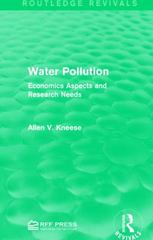Question
The Social Security Act was signed into law by President Roosevelt in 1935. There are several aspects of the program, but the central foundation is
The Social Security Act was signed into law by President Roosevelt in 1935. There are several aspects of the program, but the central foundation is a social insurance program that helps support retired workers aged 65 or older in their retirement. The funds for retired works of a given age come from the social security trust fund, which in turn is funded by payroll taxes paid by current employees and their employers. At present, employees and employers each pay 6.2% of compensation to the social security trust fund (there is a cap on contributions, but less ignore this at the moment).
a. Consider the market for labor without payroll taxes. That is, before the imposition of a tax on employees and employers, draw a supply and demand schedule for labor and identify the equilibrium in the market (quantity of labor and price of labor (i.e. wage).
b. Now, identify the impact of the 6.2% tax on compensation that is assessed on both employees and employers. As you likely know, employers are required to "withdraw" and send to the government the 6.2% employee contribution; they also need to match this payment for the employer contribution. In a diagram, identify the new equilibrium quantity and the price after the taxes (identify the 'nominal' price (where supply equals demand) [labeled P N ], the total price (wage) that employers pay [labeled P C ], and the total price (wage) that employees receive in their paycheck [labeled P S ]. c. Employees and employers legally split the burden of the tax 50/50. Is the economic burden of the tax split 50/50 between employees and employers (regardless of how you drew your diagram in part (b))?
d. Due to the shutdowns of the COVID pandemic, we saw tremendous disruption of economic activity. These disruptions were widespread and eventually lead to the CARES Act (Coronavirus Aid, Relief, and Economic Security Act). One aspect of the Act that is relevant to the labor market was the deferral on the deposit and payment on the employer share of the social security tax on employee wages. For the sake of this question, let's model this law as suspending the 6.2% compensation tax that employers need to pay to the social security trust fund (employees still had to pay their 6.2% social security tax but employers did not). Was this a boondoggle for businesses, or did workers benefit from this aspect of the law?
e. Some labor advocates argued that the law should have exempted employees from their 6.2% social security contributions instead of employers. What would have been the economic impact of suspending the employee instead of employer contribution?
Step by Step Solution
There are 3 Steps involved in it
Step: 1

Get Instant Access to Expert-Tailored Solutions
See step-by-step solutions with expert insights and AI powered tools for academic success
Step: 2

Step: 3

Ace Your Homework with AI
Get the answers you need in no time with our AI-driven, step-by-step assistance
Get Started


